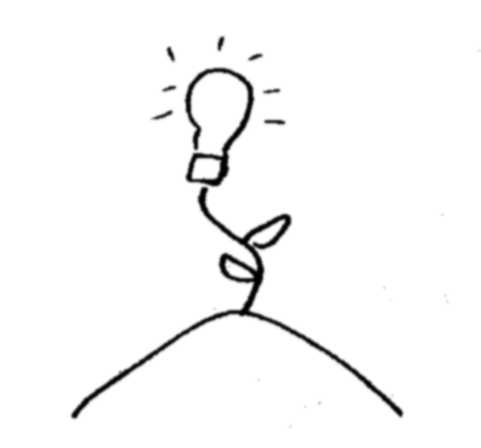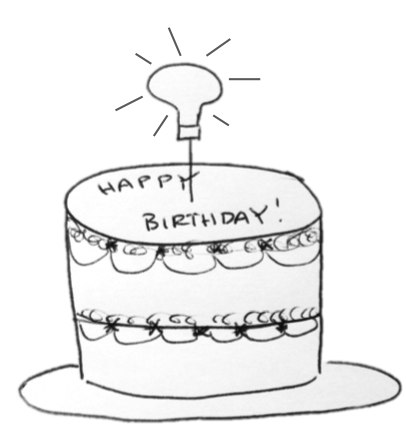Watt Now turns... 1 !
Watt Now started on March 21, 2011 as a personal project to learn about renewable energy.
1 year and 128 posts later, the website has developed into a deep exploration of innovation in cleantech and sustainability -
from solar. wind. and biotech. to recycling. to crazy storage technologies. to efficiency. to transportation. to appropriate technologies that meet the challenges of energy poverty. and more.
Watt Now has covered projects in 6 out of 7 continents (call for projects in Antarctica!) from Boston to Rio to rural Tanzania to Scandinavia to Indonesia to New Zealand.
I've learned a tremendous amount in this adventure (and still have a lot more to learn) but I wanted to briefly share 5 "takeaways" messages (and associated Watt Now projects) from this experience.
And I want to key in on #5, the fact that you as an individual can (and should) be part of the movement to develop a sustainable energy future.
1. Energy Efficiency is awesome. And everyone agrees.
To start very briefly, energy systems are composed of 4 basic steps: generation, storage, distribution, and consumption. There exists a lot of debate about which technology or combination of technologies is best for generating energy / electricity (gas, oil, coal, solar, wind, hydro, nuclear, …) in terms of economics, security, environment, and safety. However, there is more or less consensus across the playing field (politicians, environmentalists, utilities, alike) on the consumption side that energy efficiency is a key solution to meeting energy challenges. Smart grid. Smart meters. Smart buildings. Efficient appliances. And so on.
Project examples: Opower. Voltalis. <a title="ThinkEco. Presenting the Modlet, the "Modern Outlet"." href="http://wattnow.org/1763/thinkeco-presenting-the-modlet-the-modern-outlet">ThinkEco</a>. FirstFuel.
2. Solar has gotten cheap. But the industry is fragile. We must support a robust development of the industry.
The price of solar has gone down. Way down (Less than 1W to install and 25 cents / kWh). but the industry is complex and fragile with manufactures and designers alike going bankrupt. And a lot of concern and criticism around China being the center of gravity of the solar industry. Especially in the US and European countries like France (which underwent a 3-month moratorium on solar projects due to the Chinese import issue).
Germany, however, is going strong on solar despite the fragile industry. Maybe too strong? Germany (yes, that not very sunny country) has by far the largest quantity of installed solar power (17GW) in the world, and in fact, the government just passed a law cutting solar subsidies to reduce the pace of solar installations.
In any case, politicians, industrials, and local communities alike must work together and carefully to develop robust solar strategies. And support innovative solar companies that are developing amazing technologies to harness energy from our favorite star.
Project examples: Twin Creeks. Brite Solar. Bandgap Engineering. 1366. Amonix. Konarka. Solaire 2G. Wysips. Brite.
3. We need cheap storage!
The successful integration of intermittent renewables (solar, wind) into the grid requires a combination of flexible generation (cogeneration base + renewable plants), improving the grid, demand-response, and cheap energy storage. We must not ignore the importance of innovative storage companies.
Project examples: SolarFuel. LightSail. Eos. Better Place. A123.
4. The best and fastest way to combat energy poverty - is with distributed renewable energy.
Over 1.3 billion people in the world do not have access to electricity, and spend 10-20% of their income on energy (lighting, cooking, charging phones) - which leads to a perpetual cycle of enslavement to expensive (and dangerous) energy. Though centralized "grid electricity" is more efficient and cheaper than decentralized energy systems - building an electricity grid requires huge upfront capital expenditures, political accordance, and time. While governments twiddle their thumbs deciding on a grid system, distributed renewable energy can provide fast access to cheap and clean energy. As well as the opportunity to create sustainable systems around innovative energy technologies. Shall we say, the distributed renewable energy as a leapfrog technology?
Project examples: EarthSpark International, BGET, Sanergy, sOccket, Simpa Networks, blueEnergy.
5. Rendering energy accessible to the individual/community is key to moving forward to create a sustainable energy future.
Energy is complex. And difficult to grasp. Technically. And politically. But it affects us all - and we as individuals can make a difference. So it is important that we understand how we consume energy (which a lot of efficiency companies like Opower are working on through gaming and other techniques). And how we can shift our behavior to be more energy efficient and responsible. Through products we buy. How we build our homes. How we travel. How we consume water and heating or air conditioning.
And controlling where our energy comes from. Not only will utilities often now provide customers the option to select how their electricity is produced, but YOU can go out yourself and buy your energy generation. Especially with solar. The beauty of solar is that it comes in all shapes and sizes and price ranges. So you can buy your B-Squares to provide some light, charge your, iPhone, or tell you what time it is for less than $50. I know nuclear is innovating with "small nuclear plants", but I'm not we're at the point of buying a small nuclear power plant to put in your basement quite yet.
Anyway, my point is that - you should not feel hopeless about energy issues - and just "leave it" to the experts and politicians to figure it out.
Yes, national and international policy is crucial to facing energy and climate challenges, but you as an individual or local community can take action too. And make a small difference. Which could serve as an example for others to follow and copy. And eventually lead to larger scale action. Introducing Energy 2.0.
Project examples: Solar Mosaic, Do The Bright Thing, RecycleBank, Opower, Autolib', GreenBean Recycle, Solar One, SolSolution, B-squares.
So.. what now for Watt Now?
As mentioned in Watt Now in 2012, I plan to update the progress of the Watt Now's 107 companies "one year later", designated the Watt Now Crowd, while continuing to discover and document new projects that will be added to the Watt Now Crowd.
As writing articles takes (a lot of) time, I will reduce articles about new companies to (minimum) 1x/week - and add brief "one year later" updates about the Watt Now Crowd on a regular basis, starting with #1 Humdinger.
I'm also still very interested in developing a pedagogical project on 1) rendering energy concepts easy to understand, and 2) helping people answer the question "what can I do" to create a sustainable energy future? -- through some combination of fun videos and / or infographics. Anyone want to take a sabbatical and do a Kickstarter project?
Anyway, I hope you've enjoyed the ride. But the journey's far from over so let's keep on learning.
Because the answer, my friend, is blowing in the wind.
Or the sun. Or a battery. Or a smart meter. Or a waste to energy plant. Or a geothermal heat pump. Or an improved grid network. Most likely some combination of them all and more.

